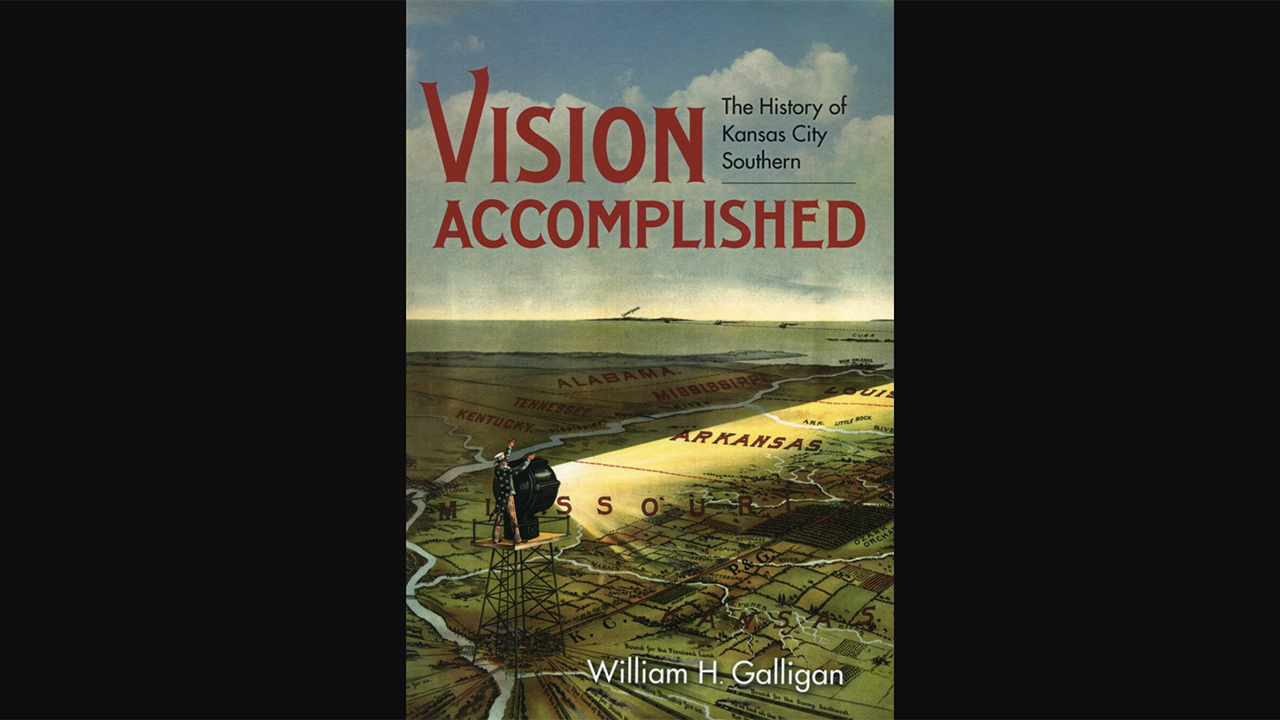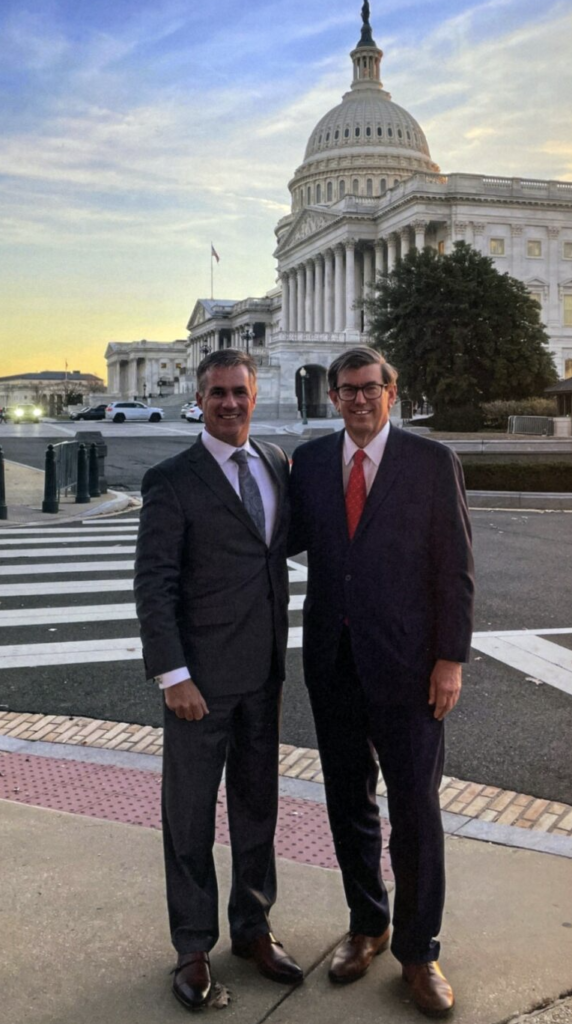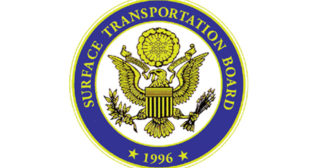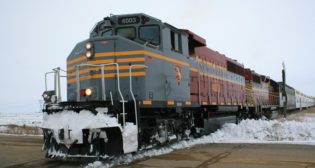
Book Review: ‘Vision Accomplished’
Written by William C. Vantuono, Editor-in-Chief
Vision Accomplished: The History of Kansas City Southern. By William H. Galligan. Indiana University Press (Railroads Past and Present Series), www.iupress.org. Hardcover and ebook, 376 pp. $40.00
RAILWAY AGE, MARCH 2024 ISSUE: William H. Galligan’s remarkable book on the history of a remarkable railroad, Kansas City Southern, isn’t a pure history book. Instead, it’s a chronicle of a company that evolved from a “fiercely independent” railroad (as former CEO and 2020 Railway Age Railroader of the Year Pat Ottensmeyer described KCS to me) to one whose ultimate destiny became forming, with Canadian Pacific—another remarkable railroad—North America’s first and only transnational, Canadian Pacific Kansas City. So in a very real sense, Vision Accomplished is the first installment in a saga that continues with CPKC, what CEO Keith Creel (our 2021 Railroader of the Year) rightfully calls “a once in a lifetime partnership.”
Creel, who shared Railroader of the Year honors in 2022 with Ottensmeyer, is now tasked with progressing the vision of his KCS predecessors, as well as those of CP, combining the best of both into one that is uniquely CPKC’s. It’s not often that such an opportunity presents itself. He is certainly up to the task, having profound respect for the history and traditions of both railroads.
Creel follows in the footsteps of such railroaders as Arthur E. Stilwell, who founded KCS in the late 19th century; Mike Haverty (our 2001 Railroader of the Year), who pushed it southward into Mexico; the late Dave Starling (2012 Railroader of the Year), who continued Haverty’s vision of a “NAFTA Railroad”; and Pat Ottensmeyer, who joined forces with him in a long, drama-filled process to create CPKC.
Bill Galligan, who joined KCS in 1992 (the same year I joined Railway Age) and ran investor relations and communications until his 2018 retirement, describes KCS best:
“Arthur E. Stilwell chose to build his railroad in the ‘wrong’ direction, north-south rather than east-west … It was precisely his disregard of conventional wisdom that gave birth to the core tenet of KCS’s identity. From the very beginning, those responsible for charting the company’s strategic direction based their decisions solely on what they felt was best for the company and its employees, customers and shareholders, even when some of their initiatives flew in the face of conventional thinking. There remained throughout its 135-year history a strong contrarian element to the company’s corporate culture. As one later executive of KCS was fond of stating, ‘The one thing you can say with some certainty about conventional wisdom is that it’s usually wrong.’
“Looking back, it can be said that flying in the face of conventional late 19th century thinking proved to be exactly the right decision. To declare that this north-south railroad company beat the odds and survived understates the magnitude of its eventual success. In 2009 during its celebration of 20 years of broadcasting, CNBC brought together a panel of financial news reporters to guess what company’s stock, if purchased in 1989 and held to 2009, had provided its share owners the greatest percentage profit. While the guesses were predictable—Microsoft, Apple, IBM—the correct answer was a shocker: KCS. Not too shabby for a railroad built in the ‘wrong’ direction!
“The story of KCS is of a company that charted its own path from day one. It was a company led by a succession of individuals with vision, who were not afraid of taking risks in pursuit of fulfilling those visions. Without the resources of the earlier land grant railroads, this Kansas City-based company forged a different approach to growing its franchise. It compensated for its modest size by developing an outsized, personalized commitment to its customers, suppliers and rail partners. While larger railroads with their vast rail network sometimes cajoled customers and smaller railroads into conforming to their service offerings, KCS sought to develop mutually beneficial relationships with multiple constituents. For years, KCS heard from shippers that they like doing business with the company. When you’re smaller, every relationship is a priority. This hands-on, relationship-based philosophy born in the late 19th century remained a core operating principle of KCS through the entirety of its existence as an independent railroad …

“This book is the story of a succession of individuals who through the strength of their personalities, vision, courage and character led the railroad through one perilous situation after another and in so doing crafted a corporate culture truly unique in the railroad industry. It is a story of a railroad that by rights should have died dozens of times but did not. Not only did it survive, it grew to become a major participant in the North American supply chain.”
For me, Vision Accomplished brings back many wonderful memories of my formative years with Railway Age in the late 1990s, reporting on privatization of Ferrocarriles Nacionales de México. I traveled extensively on newly formed TFM (which became KCS de México in 2005) with railroaders like Chris Aadnesen, Bill Lyman, Dave Brookings and Jim Chavez, the nucleus of the team implementing Mike Haverty’s vision, transforming FNM’s Northeast concession into a first-class operation.
Close to 30 years after I first set foot in Mexico, later hi-railing CP’s British Columbia main line and riding on the head end of a CP freight through the Spiral Tunnels across Canada’s Continental Divide, I witnessed in April 2023 Keith Creel and Pat Ottensmeyer driving the Final Spike in Kansas City, the culmination of the CPKC transaction, which Railway Age had spent the better part of two years covering.
Through it all, there was a fascinating backstory punctuated by sharp curves and unique personalities, winding up with the CP/CN competition to merge with KCS. It’s all chronicled in engaging detail by Galligan in Vision Accomplished.
Pat Ottensmeyer, Galligan writes, “had been a major contributor, at times the most important and influential contributor, to the development of KCS’s merger transaction strategy. He had first helped formulate the process the transaction team used to evaluate bids received from … prospective acquirers. Then he was integral to the person-to-person negotiations that followed the offers. He kept the dialogue and negotiations fluid, collegial, professional and productive. The strategy had proven to be sound, and its execution by the board of directors and transaction team was flawless.”
Of Keith Creel, now shaping a new CPKC story that undoubtedly will be the subject of a railroad history book many years from now, Galligan writes:
“One could not be a KCS employee and be in the company of Keith Creel for a few minutes before getting the sense that his demeanor, attitude, spirit, confidence and fortitude was strikingly similar to that of past KCS executives … A number of observers saw him as a clone of his mentor and CP’s predecessor, Hunter Harrison, and Creel was always quick to pay tribute to his former boss and close friend. He did not shy away from the comparisons, but he was very much his own man, determined to define himself and not be seen as a shadow of Harrison.
“When Creel told people CP was the perfect partner for KCS, and a CP-KCS merger was the only Class I railroad merger with a chance of winning regulatory approval in today’s political climate, it was not merely lip service … In his heart and soul, Creel believed in this combination, and his sincerity and the strength of his convictions came through.
“In good part because of Creel, CP came across as a dynamic, hungry and determined railroad that, while smaller than all Class I’s except KCS, was not afraid to take on big challenges and had the forward-thinking management team to succeed. Creel’s CP bore many similarities to KCS; would that not be a combination to behold? Creel certainly thought so.”
Bill Lyman describes Vision Accomplished as “delightful,” a “page turner” that doesn’t “bury the reader in numbers.” Author Fred Frailey calls it “riveting … Read it and be amazed at what determined people can do.”
I call Vision Accomplished a book worth much, much more than its cover price.



